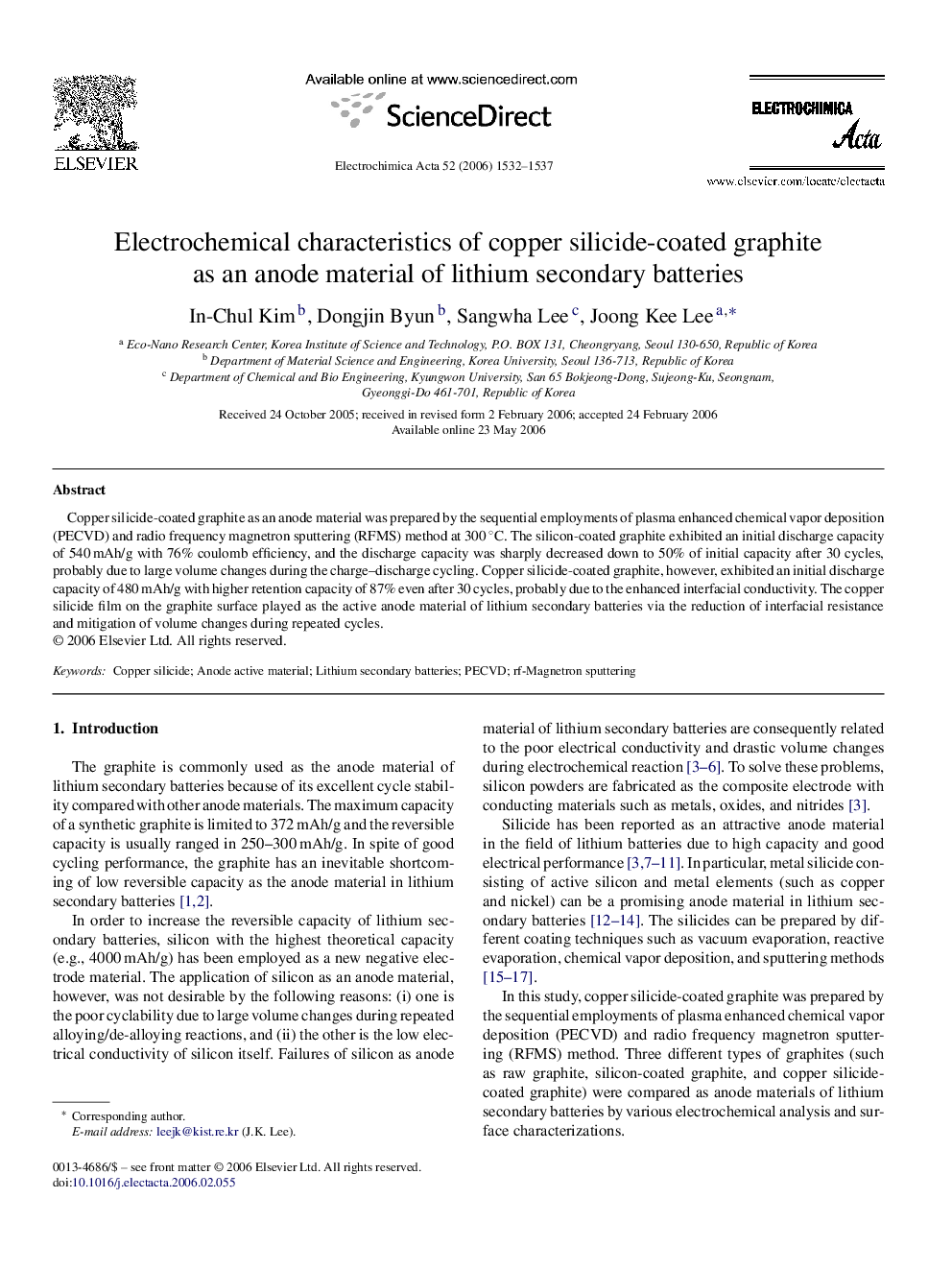| Article ID | Journal | Published Year | Pages | File Type |
|---|---|---|---|---|
| 194796 | Electrochimica Acta | 2006 | 6 Pages |
Copper silicide-coated graphite as an anode material was prepared by the sequential employments of plasma enhanced chemical vapor deposition (PECVD) and radio frequency magnetron sputtering (RFMS) method at 300 °C. The silicon-coated graphite exhibited an initial discharge capacity of 540 mAh/g with 76% coulomb efficiency, and the discharge capacity was sharply decreased down to 50% of initial capacity after 30 cycles, probably due to large volume changes during the charge–discharge cycling. Copper silicide-coated graphite, however, exhibited an initial discharge capacity of 480 mAh/g with higher retention capacity of 87% even after 30 cycles, probably due to the enhanced interfacial conductivity. The copper silicide film on the graphite surface played as the active anode material of lithium secondary batteries via the reduction of interfacial resistance and mitigation of volume changes during repeated cycles.
